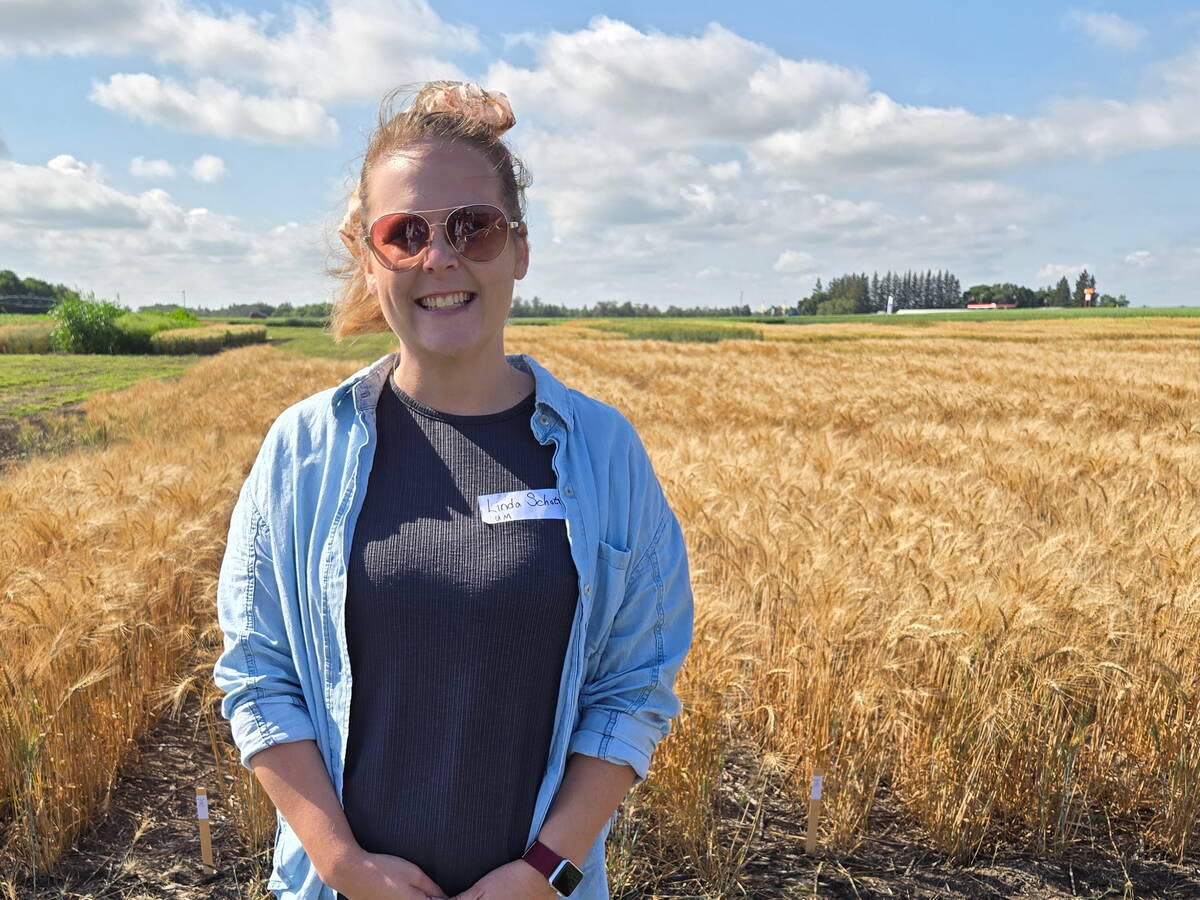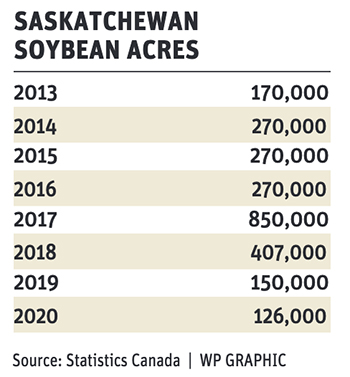Acres have plummeted in the province as yields fail to impress, but some producers insist the crop still has a future
Saskatchewan farmers who grew soybeans in 2017 and 2018 haven’t forgotten about it.
That includes Rob Stone, who farms near Davidson between Regina and Saskatoon.
“I haven’t grown soybeans in three years. (I think) 2018 was the last (year),” said Stone, who will not be growing soybeans anytime soon.
“Soybeans are dead to us until we get another wet cycle.”
Stone and hundreds of other Saskatchewan farmers planted soybeans in 2017 and 2018, seeding 850,000 acres and 407,000 acres across the province.
However, summer weather was exceptionally dry in both years. In August 2018, Regina recorded 17 millimetres of rain for the entire month. That’s not nearly enough for soybeans, which need moisture in late July and early August for pod fill.
Read Also

University of Manitoba hires potato researcher
A new research chair position at the University of Manitoba will tackle sustainability in the potato industry.
In 2017 and 2018, many Saskatchewan farmers recorded soybean yields of 15 to 20 bushels an acre.
Some had yields of eight bu. per acre.
Farmers don’t forget that sort of thing, which is why soybean acres have plummeted in the province. Statistics Canada pegged 2020 acres in Saskatchewan at 126,000, the lowest total since 2012. The agency doesn’t provide an acreage estimate for 2021 on its website.
Winston Van Staveren, who farms near Creelman, Sask., said his family is sticking with soybeans.
“I’ve heard of lots of farmers giving up on soybeans, and it was up for discussion (on our farm) this winter … (but) we thought we’d put them in again this year,” he said.
“They’re a nice alternative to lentils… (and) there are good herbicide options with soybeans.”
The challenge with soybeans in Saskatchewan is they don’t generate the necessary yields. In Manitoba, many growers can achieve yields of 40 to 50 bu. and higher. That hasn’t happened on Van Tavern’s farm.
“We can’t seem to get over 30 bu. per acre,” said Van Staveren, a director with SaskPulse.
“A lot of farmers have looked at that and said it’s not worth growing them.”
Stone is one of those farmers. For him, soybeans don’t make economic sense.
“They’re a very attractive rotational crop for fighting aphanomyces (root rot) with peas and lentils and dealing with clubroot, blackleg and all the things in a too tight canola rotation. That said, you have to be able to grow a rotational crop that kind of makes you money,” he said.
“We don’t need … another crop that kind of makes you money.”
Saskatchewan’s climate might be too dry for soybeans, but Van Staveren remains optimistic.
He’s in his mid-20s and just beginning his career in farming. Looking ahead to the next 10 to 30 years, Van Staveren is confident soybeans can succeed in the province.
“Maybe the (plant) genetics aren’t there ye t… (but) I certainly see soybeans taking off sometime in the future. They’ll be a bigger part of our crop rotation in this province.”
In the shorter term, Van Staveren is optimistic about 2021. In mid-June, his soybean crop was looking great.
If it rains in early August, maybe he’ll reach 35 to 40 bu. per acre or higher.

















